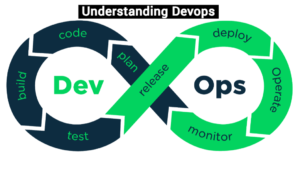Social media marketing (SMM) refers to the use of social media applications as a tool for internet marketing. The features of social media marketing is allows brands to connect with their target audience and accomplish various goals, including building a brand, increasing sales, driving traffic to a website, and fostering a community of engaged followers. By creating and sharing relevant content that users find valuable and shareable, brands can enhance their visibility and reach a wider audience. Moreover, social media marketing enables organizations to establish relationships with their audience, fostering engagement and providing a platform for customer feedback. It also allows brands to adapt and improve their business processes or products based on user input.
Social media platforms like Facebook, Twitter, LinkedIn, YouTube, Pinterest, Instagram, and Snapchat are popular channels for social media marketing. Each platform has its own unique features and advantages, making it appealing to businesses. Combining multiple platforms in a comprehensive multichannel approach allows brands to deliver their messages through the preferred channels of their target audience.
Features of Social Media Marketing
To develop an effective social media marketing program, it is essential to focus on the following five pillars:
Social strategy
A well-defined social strategy is crucial for any marketing campaign. Organizations need to identify their goals, select the appropriate social media platforms, and determine the type of content they will share. Aligning social media marketing with overall business objectives is essential. Goals can include increasing brand awareness, driving website traffic and leads, and boosting revenue. It is important to choose the social media platforms that align with the target audience’s demographics and preferences. Additionally, understanding the content preferences of the marketing persona is key to engaging with the audience effectively.
Planning and publishing
Once a strategy is in place, organizations need to focus on publishing content consistently. This can include sharing blog posts, promoting events, or showcasing product videos. Consistency is key to building an audience and keeping them engaged. Posting relevant and valuable content consistently will encourage the audience to return for more.
Tools like Hootsuite, HubSpot, and Sprout Social can be used to schedule posts at the appropriate times, ensuring consistent content delivery.
Listening and engagement
Creating activity on social media platforms can lead to increased interaction and conversations about the brand and its products. Users may comment on and share posts, tag the company in their own posts, or engage through instant messaging features. These interactions are valuable opportunities for social media managers to practice good customer service and enhance the overall customer experience.
It’s also important to actively listen to what people are saying about the brand, product, or service. Various social media listening tools, such as Brandwatch, NetBase Quid, and Sprinklr, can help organizations stay informed about conversations happening around their brand. Free tools like Google Alerts can also provide notifications when the company is mentioned.
Analytics and reporting
As the audience expands and more content is published, it becomes crucial to measure performance and gather insights. Analyzing data helps answer questions such as which posts are generating the most engagement and where the brand’s followers are located. Data and analytics play a significant role in making informed decisions for future marketing campaigns. Each social media platform provides its own analytics data, but there are also tools available that consolidate data from multiple channels, providing a comprehensive view of the overall campaign success and areas for improvement.
Advertising
While social media marketing offers many free opportunities, as the program grows, it may be beneficial to invest in paid marketing features. Paid advertisements can be highly targeted based on demographics, retargeting, and user behaviors. Native ads and other advertising tools within social media platforms allow brands to promote their posts, capture leads, and ensure their messages reach the right audience.
Advantages and disadvantages of social media marketing
Social media marketing offers several advantages for organizations, but there are also potential disadvantages to consider.
Advantages:
- Reach a wider audience: With billions of users across various social media channels, brands have the opportunity to significantly increase their exposure and brand awareness through a single post.
- Improved customer satisfaction: Social media provides a platform for direct interaction with customers, allowing for better customer service and personalized relationships.
- Cost-effective tool: When properly managed, social media marketing can be cost-effective, requiring minimal overhead once the necessary knowledge, team, and program strategy are in place.
- Increase website traffic: Social media posts can effectively drive traffic to a brand’s website by promoting blog content, landing page offers, and other valuable resources.
- Gain better insights: The analytics and reporting features of social media platforms offer valuable insights into the audience’s interests, preferences, and engagement behavior.
Disadvantages:
- Time-consuming process: Effectively managing social media campaigns requires a significant investment of time and resources. Consistently creating and scheduling content, as well as responding to inquiries, can be challenging for small marketing teams.
- Need for qualified resources: Running a successful social media marketing program requires skilled and experienced professionals who understand the intricacies of social media platforms.
- Delayed ROI: Social media marketing is a long-term investment, and results may not be immediate. Success is typically measured over extended periods, considering multiple pieces of content and ongoing engagement.
- Competitor market research: Social media platforms provide a public forum for sharing content, making it accessible to competitors as well. Brands must be aware that their content can be seen and analyzed by their competitors.
- Vulnerability of brand reputation: Social media exposes brands to potential negative reviews and public criticism. Prompt and effective response times are essential to mitigate risks and maintain a positive brand reputation.

